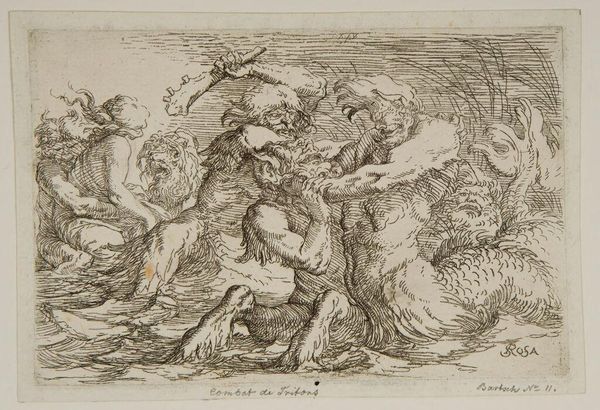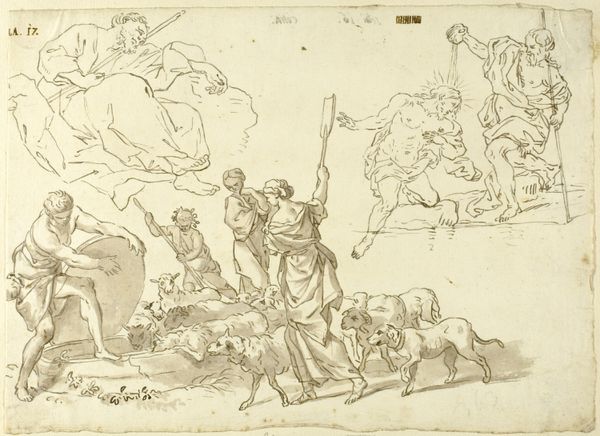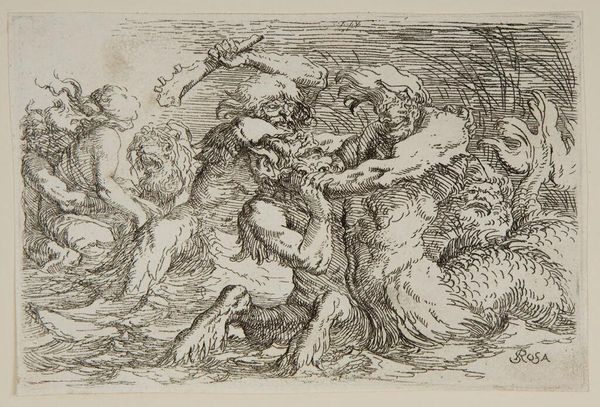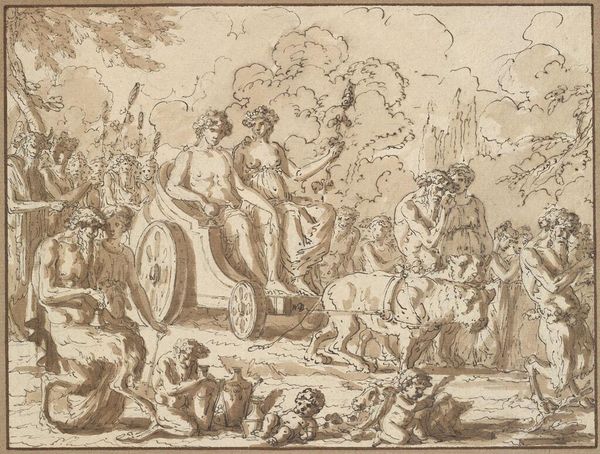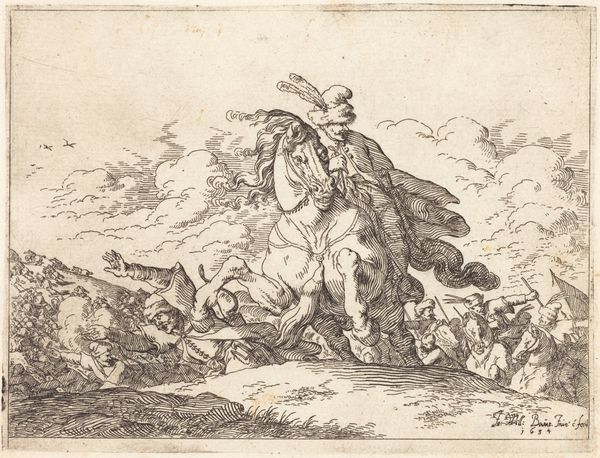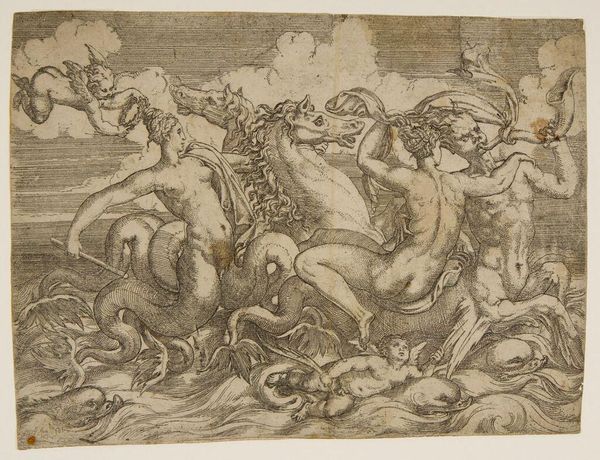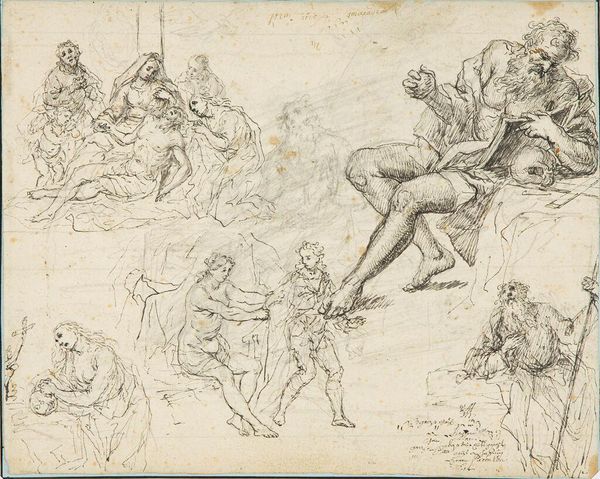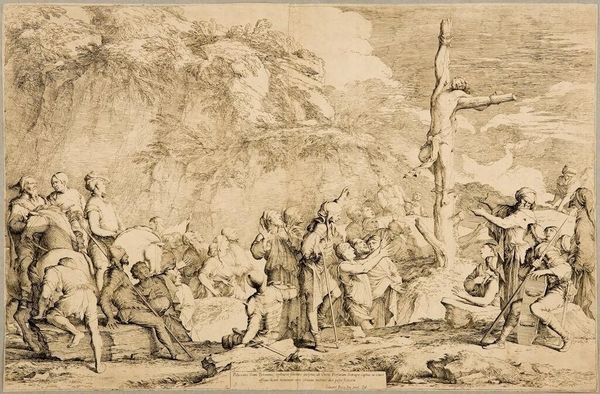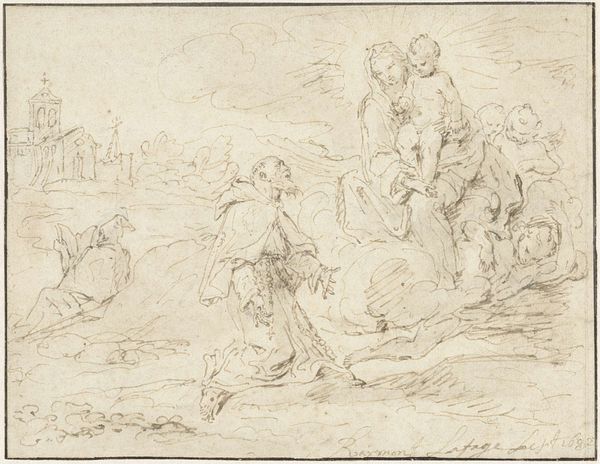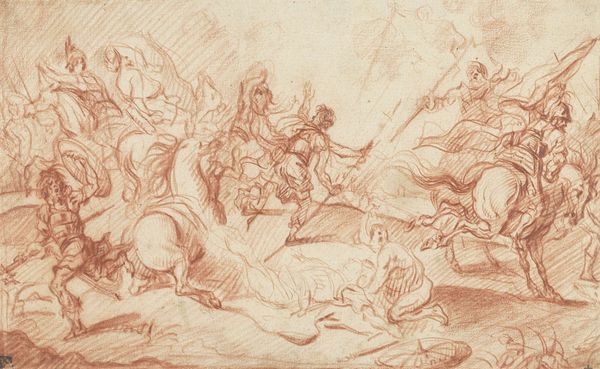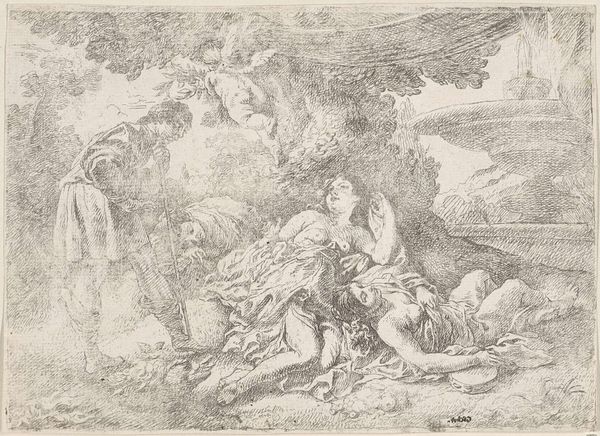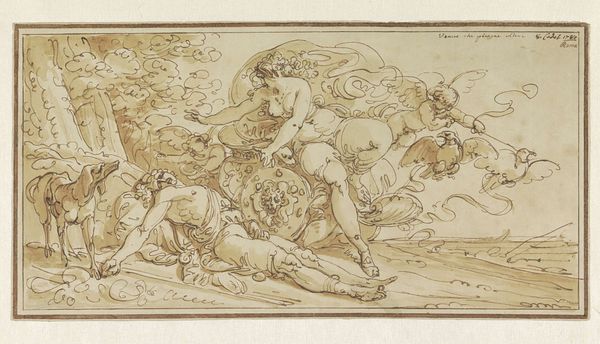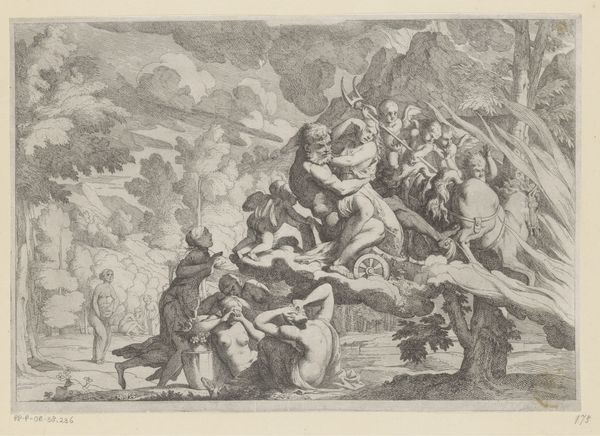
drawing, ink
#
drawing
#
ink drawing
#
baroque
#
pen sketch
#
landscape
#
figuration
#
ink
#
sketchwork
#
mythology
#
history-painting
Dimensions: height 229 mm, width 362 mm
Copyright: Rijks Museum: Open Domain
Editor: Here we have J. Roettiers' "Triumph of Amphitrite," a pen and ink drawing from sometime in the 18th century. It's a very lively sketch. All the figures seem caught in dynamic movement, and the rapid lines create a sense of energy. What grabs your attention most about this piece? Curator: Well, what's fascinating is thinking about this work not just as a representation of a mythological scene, but also as an artifact of a particular artistic and social practice. Consider the labor involved in producing the ink itself, likely crafted from specific recipes using soot or plant extracts, ingredients which often traveled great distances. Editor: Right, and the paper too! Curator: Exactly! Where was the paper sourced? What was the production process like? And then we consider the artist, Roettiers. What was his workshop like? Was this a study for a larger work? The seemingly casual sketch suggests a confidence born from training. Editor: So, instead of solely focusing on the mythological subject matter, you’re pointing towards the tangible conditions and means of its making? Curator: Precisely! Think about the role of patronage too. Who commissioned this, and how would its intended audience have engaged with it? The mythological subject connects it to traditions of power and display. It wasn’t created in a vacuum; materials, artistic training, and social forces all converge in this one "simple" ink drawing. Editor: I hadn't considered the ink's journey, or the paper's! It definitely changes my perspective seeing the work as a product of those material and social processes. Thank you! Curator: And seeing it also reveals something about our own methods of valuation; which aspects of artistic production do we choose to highlight and why?
Comments
No comments
Be the first to comment and join the conversation on the ultimate creative platform.
